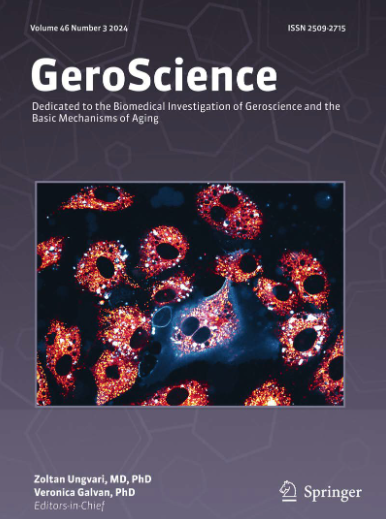欧洲握力参考值:来自27个国家的个人参与者数据分析。
IF 5.4
2区 医学
Q1 GERIATRICS & GERONTOLOGY
引用次数: 0
摘要
我们的目的是确定欧洲的握力参考值。数据来自欧洲健康、老龄化和退休调查,涉及50岁以上的成年人。参考值以绝对(kg)和相对(kg/m2)握力的加权百分位数表示。女性绝对握力在50-54岁年龄组中最高(站立:第5百分位[P5] = 19 kg;第50百分位[P50] = 29 kg;第95百分位[P95] = 39 kg,坐着:P5 = 20 kg; P50 = 29 kg; P95 = 40 kg),在≥90岁年龄组中最低(站立:P5 = 9 kg; P50 = 17 kg; P95 = 26 kg,坐着:P5 = 6 kg; P50 = 14 kg; P95 = 24 kg)。男性绝对握力在50-54岁年龄组中最高(站立:P5 = 30 kg; P50 = 46 kg; P95 = 62 kg,坐着:P5 = 29 kg; P50 = 46 kg; P95 = 60 kg),在≥90岁年龄组中最低(站立:P5 = 12 kg; P50 = 27 kg; P95 = 39 kg,坐着:P5 = 10 kg; P50 = 25 kg; P95 = 37 kg)。与女性相比,男性的握力更强。与南欧和中欧/东欧相比,北欧和西欧的握力普遍更高,站姿的握力也高于坐姿。在相对握力方面也发现了类似的模式。本研究确定的参考值可以为临床、人口健康和研究目的提供基准。本文章由计算机程序翻译,如有差异,请以英文原文为准。
Reference values for handgrip strength in Europe: analysis of individual participant data from 27 countries.
We aimed to determine reference values for handgrip strength in Europe. Data from the Survey of Health, Ageing and Retirement in Europe were used, involving adults aged 50 + years. Reference values were expressed as weighted percentiles for absolute (kg) and relative (kg/m2) handgrip strength. For women, the highest absolute handgrip strength was observed among the 50-54-year-olds (standing: 5th percentile [P5] = 19 kg; 50th percentile [P50] = 29 kg; 95th percentile [P95] = 39 kg, sitting: P5 = 20 kg; P50 = 29 kg; P95 = 40 kg) and the lowest among the ≥ 90-year-olds (standing: P5 = 9 kg; P50 = 17 kg; P95 = 26 kg, sitting: P5 = 6 kg; P50 = 14 kg; P95 = 24 kg). For men, the highest absolute handgrip strength was observed among the 50-54-year-olds (standing: P5 = 30 kg; P50 = 46 kg; P95 = 62 kg, sitting: P5 = 29 kg; P50 = 46 kg; P95 = 60 kg) and the lowest among the ≥ 90-year-olds (standing: P5 = 12 kg; P50 = 27 kg; P95 = 39 kg, sitting: P5 = 10 kg; P50 = 25 kg; P95 = 37 kg). Compared with women, men had higher handgrip strength. Handgrip strength was generally higher in Northern and Western Europe compared with Southern and Central/Eastern Europe, and in the standing position compared with the sitting position. Similar patterns were found for relative handgrip strength. The reference values determined in this study can facilitate benchmarking for clinical, population health, and research purposes.
求助全文
通过发布文献求助,成功后即可免费获取论文全文。
去求助
来源期刊

GeroScience
Medicine-Complementary and Alternative Medicine
CiteScore
10.50
自引率
5.40%
发文量
182
期刊介绍:
GeroScience is a bi-monthly, international, peer-reviewed journal that publishes articles related to research in the biology of aging and research on biomedical applications that impact aging. The scope of articles to be considered include evolutionary biology, biophysics, genetics, genomics, proteomics, molecular biology, cell biology, biochemistry, endocrinology, immunology, physiology, pharmacology, neuroscience, and psychology.
 求助内容:
求助内容: 应助结果提醒方式:
应助结果提醒方式:


